Featured Past Articles
 Freight, the taxation regime, and the EU plant health regulation were predicted to be the biggest challenges for the Kenyan floriculture in 2021, according to Kenya Flower Council’s (KFC) CEO Clement Tulezi. “When I was predicting that earlier in the year, I was not wrong. These three have remained the major challenges, and not much has changed since, unfortunately.” In this article, Tulezi goes over the current state of these challenges, as well as a new challenge the Kenyan flower industry is having to deal with and how Tulezi’s association is helping to find solutions and improvements.
Freight, the taxation regime, and the EU plant health regulation were predicted to be the biggest challenges for the Kenyan floriculture in 2021, according to Kenya Flower Council’s (KFC) CEO Clement Tulezi. “When I was predicting that earlier in the year, I was not wrong. These three have remained the major challenges, and not much has changed since, unfortunately.” In this article, Tulezi goes over the current state of these challenges, as well as a new challenge the Kenyan flower industry is having to deal with and how Tulezi’s association is helping to find solutions and improvements.
20-25% of daily harvest thrown away
According to Tulezi, their top priority at the moment is freight. “In 2020, we temporarily lost demand for our industry, and the airlines found better business elsewhere because of Covid. As a result, the freight costs have gone up, and this situation has persisted. We are still short on capacity. There are still many cancellations. Almost every two days a flight to Nairobi is canceled, meaning that the capacity has not improved. The sector falls short of 1500 tons per week. As a result, the majority of growers and exporters are throwing away 20-25% of their daily harvest. Meanwhile, the demand for Kenyan flowers is good. These growers have invested a lot into their production, for which there is actually enough demand, but there is no space to transport it.”
In addition, the costs of transporting the Kenyan flowers have remained very high. “Moving produce from Nairobi costs on average $2,60 per kilo, whereas this only costs $1.50 for the Ethiopian market. When all other factors are held constant, how can the Kenyan market compete in the same market?”
Read more: Kenyan Flower Growers are Still Throwing Away 25% of Daily Harvest
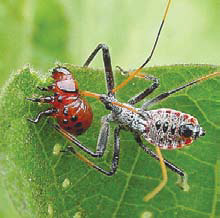 Insect monitoring forms an important part of integrated pest management programmes. It is crucial to identify pests accurately so that appropriate control measures can be taken. Insect traps are one way of observing the prevalence of insects.
Insect monitoring forms an important part of integrated pest management programmes. It is crucial to identify pests accurately so that appropriate control measures can be taken. Insect traps are one way of observing the prevalence of insects.
Agricultural research and farming practices are increasingly driven by recognition of the need for sustainable agriculture and lower environmental impact.
Lately, we have main facilities, that boast of the latest technology and a local research and development team that enables them to address the specific needs of its clients. Their mission is to produce integrated and sustainable solutions for pest management that contribute to healthier and more productive agricultural systems. The facilities focus on the production and application of beneficial organisms used in biological pest control and IPM programmes. Insects will be massproduced to support the IPM programmes both locally and internationally.
Biological pest control uses living organisms to suppress pest densities, and is centred on using one type of organism, the ‘natural enemies’, to control another, the pest species.
By Mary Mwende Mbithi
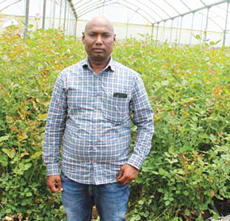 On the shores of Lake Naivasha, off North Lake Road in Kasarani area of Naivasha in Nakuru County lies a magnificent, well maintained farm with landmark, conspicuous greenhouses. Shalimar Flower Farm, a hotbed of horticulture thriving in Avocado and cutflower growing.
On the shores of Lake Naivasha, off North Lake Road in Kasarani area of Naivasha in Nakuru County lies a magnificent, well maintained farm with landmark, conspicuous greenhouses. Shalimar Flower Farm, a hotbed of horticulture thriving in Avocado and cutflower growing.
Inception and Production
The farm was started in 2002 on a 350 acre piece of land. It is one of the four farms enshrined under the umbrella of Shalimar Flowers (K.) Limited, (previously East Africa Growers). Having expanded from the initial 30 hectares, it currently, runs on 34 hectares massive piece of land. Shalimar Flowers (K.) Limited grows over 40 varieties of Roses mainly the T-Hybrid, Premium and Spray intermediate roses. ( in different farms ) They have incorporated the hydroponics system in their production. They also grow other flowers such as Gypsophilla, Solidago, Lipiedium, Chrysanthemum, Eucalyptus and Gerbera. They are also preparing to introduce Astroemeria and Hypericum flowers in their farms.
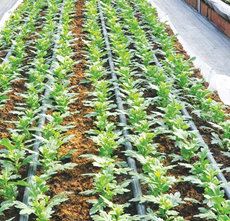 Fertigation is a widely used farming practice. The fertigation technique allows growers to save time, resources, and efforts by completing two events at a time: fertilization and irrigation. Customization of modern fertigation systems and innovative satellite-based software enable pinpoint variable rate fertilizer (VRF) applications. The most efficient method is drip fertigation that reduces inputs and delivers nutrients to the root zone. The technology is suitable for farm enterprises of any size since there are large and small-scale fertigation systems, with manual or fully automated control.
Fertigation is a widely used farming practice. The fertigation technique allows growers to save time, resources, and efforts by completing two events at a time: fertilization and irrigation. Customization of modern fertigation systems and innovative satellite-based software enable pinpoint variable rate fertilizer (VRF) applications. The most efficient method is drip fertigation that reduces inputs and delivers nutrients to the root zone. The technology is suitable for farm enterprises of any size since there are large and small-scale fertigation systems, with manual or fully automated control.
What Is Fertigation?
In fertigation, liquid fertilizers are delivered to plants with irrigation. Compared to traditional fertilization methods, the fertigation technique proves to be more efficient. In particular, benefits of fertigation include:
Read more: Fertigation: All-The-Rage Agricultural Technology
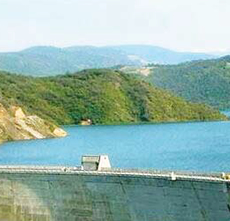 When it comes to talking about disease-related issues in greenhouse crops, one point of confusion is often WHICH pathogens CAN be transmitted by water. Some are obvious – we all know Pythium is water-borne. But what about other culprits, like Fusarium or Erwinia? Should you worry about these in your recirculating water?
When it comes to talking about disease-related issues in greenhouse crops, one point of confusion is often WHICH pathogens CAN be transmitted by water. Some are obvious – we all know Pythium is water-borne. But what about other culprits, like Fusarium or Erwinia? Should you worry about these in your recirculating water?
“Water-borne” fungi
You may have heard the term “water-borne” when discussing irrigation water and disease risks from Fungi, but aren’t sure exactly which pathogens it includes.
Generally, there are two types of pathogens we can consider as “water borne” fungi. The first – and most classic definition – are pathogens that are actually motile in water (i.e. produce swimming structures). This includes Pythium and Phytopthora. Both of these diseases are technically classified as “water molds”, being more closely related to algae than to fungi, though they look very much like fungi. They are well adapted to an aquatic environment and can live where irrigation water is stored (cisterns, ponds) for long periods.
Read more: Which Pathogens Should You Worry About in Your Water?
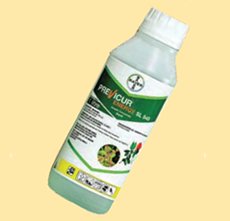 Fungicides work by stopping or inhibiting fungal growth, sporulation or germination of spores. Different fungicides act on different stages of the fungal lifecycle and not all fungicides are effective against all fungi. Resistance occurs when a pathogen that was once sensitive to a fungicide is no longer sensitive (not controlled). Managing the use of fungicides and fungicide resistance in farms is important and can be achieved with planning.
Fungicides work by stopping or inhibiting fungal growth, sporulation or germination of spores. Different fungicides act on different stages of the fungal lifecycle and not all fungicides are effective against all fungi. Resistance occurs when a pathogen that was once sensitive to a fungicide is no longer sensitive (not controlled). Managing the use of fungicides and fungicide resistance in farms is important and can be achieved with planning.
Protectant, curative and eradicant products
Fungicides are categorised by the stage of the disease cycle they target. Although the life cycles and biology of pathogens as a whole are very diverse, the disease cycle can be split into the following generalised stages:
Infection (penetration of the host plant)
Colonisation (multiplication of the pathogen within the local area of infection in the plant before symptoms occur)
Symptom expression (visual signs of disease)
Spore production and spread (normally occurs multiple times per year, depending upon the pathogen and environmental conditions)
 Flower farmers in Kenya are being forced to throw away a quarter of their produce due to a drop in airline traffic in the wake of restrictions imposed on rival carriers to protect Kenya Airways.
Flower farmers in Kenya are being forced to throw away a quarter of their produce due to a drop in airline traffic in the wake of restrictions imposed on rival carriers to protect Kenya Airways.
Kenya Flower Council (KFC), the lobby for large-scale flower farms, says they need freight capacity of at least 5,000 tonnes a week against the 3,500 tonnes available. The government has been reluctant to allow Ethiopian Airlines, for instance, to increase its capacity from Jomo Kenyatta International Airport (JKIA).
“On average our members are dumping flowers equivalent to 25 percent of their produce because of the limited cargo capacity,” said Clement Tulezi, chief executive of the Kenya Flower Council.


